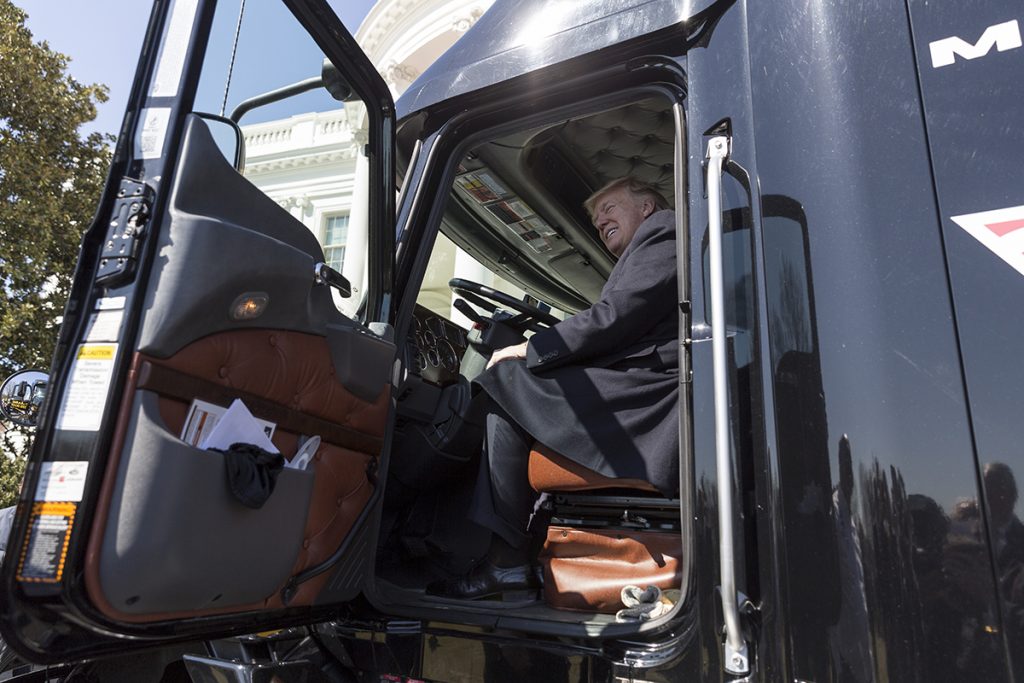
Federal trucking regulations were established to help keep the country’s roadways safe for truck drivers and the other drivers, bikers, cyclists, and pedestrians who share the road with commercial truck drivers. Large truck accidents are almost always catastrophic due to the massive size and weight of commercial trucks. When they collide with smaller passenger vehicles, pick-up trucks, SUVs, and motorcycles, the result is often deadly. When violations to the federal trucking regulations occur, people get hurt. It’s that simple.
Easing up on Restrictions Despite High Number of Accidents
Despite alarming statistics that indicate tired truckers are contributing to an increase in the number of truck accidents in the United States, the Trump Administration is taking steps to loosen federal trucking regulations that restrict the number of hours that truck drivers can work in one sitting.
There were 4,657 large trucks involved in fatal crashes in 2017, a 10% increase from the year before, according to a May report by the Federal Motor Carrier Safety Administration, an agency of the Transportation Department. Sixty of the truckers in these accidents were identified as “asleep or fatigued,” and studies show that this type of incident is typically under-reported in police statements. Not all truck drivers involved in accidents appear to be tired or physically fatigued, and not all truck drivers involved in accidents will admit to how many hours they’ve been behind the wheel in one stretch.
According to the current “hours-of-service rules” posted on the FMCSA’s website, truckers are allowed to drive for a maximum of 11 hours after 10 hours of being off duty. The hours are tracked electronically, so no cheating is possible. The truck digitally records all seconds, minutes, and hours the trucker is traveling, and fines are assessed for violating the hours-of-service federal trucking laws.
Also, truck drivers must rest for 30 minutes for every eight hours of driving. Even if the trucker is sitting in bumper-to-bumper traffic for two or three of those hours, they are legally obligated to pull over and rest for a full thirty minutes. Truck drivers are also restricted to 60-70 hours of driving in a 7-8 consecutive workday schedule. Again, fines are assessed for any time truck drivers work over the federally ordered time limits.
According to an article published online in the Insurance Journal, “The trucking industry has developed a strong relationship with President Donald Trump, who has made rolling back layers of regulatory oversight a top priority. At least a dozen transportation safety rules under development or already adopted were repealed, withdrawn, delayed or put on the back burner during Trump’s first year in office.”
While some people are thrilled with the loosening of federal trucking regulations because it means more money in the pockets of trucking companies, others are concerned that easing up on the trucking restrictions for driving time will result in even more serious injuries and deaths on the nation’s roadways.
The National Transportation Safety Board (NTSB) has declared fatigue a “pervasive problem” in all forms of transportation in recent studies, and a study more than ten years ago indicated that 13% of truck drivers involved in crashes that resulted in fatalities or injuries were fatigued at the time of the accidents. Loosening federal trucking regulations may put more money in some people’s pockets, but shouldn’t everyone be more concerned with the safety of their truck drivers and those who share the road with them?




Check your facts….. your hours of service stats are wrong. Along with a few other misleading things.
The FACT is the Federal Mandated electronic logging devices have increased accidents,speeding and fatigue! Drivers are forced to rush and try and beat the clock daily then sleep when a computer tells them..
Do some research and see how the crash rates INCREASED when the electronic logs were mandated!
It’s the current HOS rules that are contributing to the increase in accidents. Those of us that drive knew exactly what was going to happen, more people would needlessly die. A driver needs flexibility to rest when they are tired , stop when traffic is heavy and we need a place to park where we are not harassed by law enforcement. We need flexibility to stop the clock so every day isn’t a race against the clock.